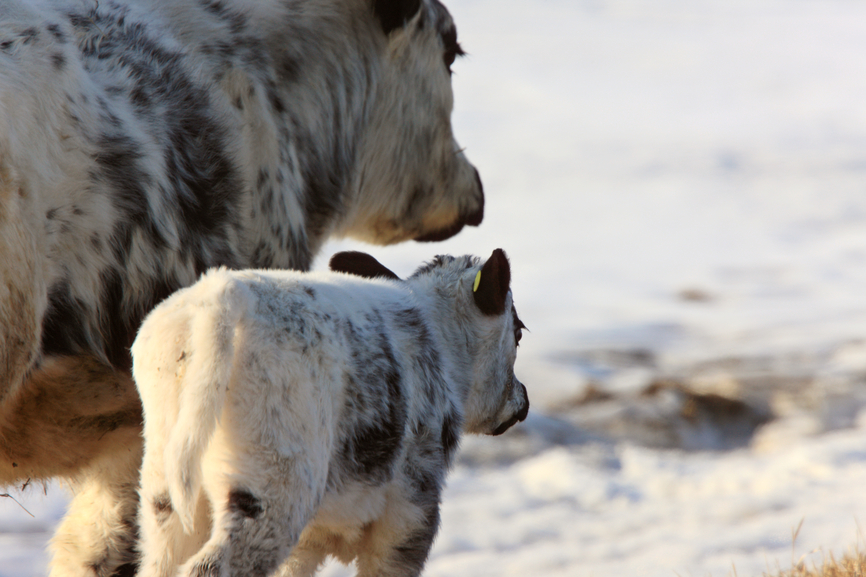
Many of our customers are preparing to start calving this month. Keeping calves alive and healthy becomes a greater challenge when temperatures are well below freezing. Fortunately, by following a few of these best calving practices you can get calves off on the right foot despite the weather.
As with many things in animal health, preparation is the key to a successful calving season. Weeks before calving make sure you have all the supplies you need. Put together your calving kit with a flashlight, OB lube, shoulder sleeves, OBchains or straps with handles, a mechanical calf puller if you use one and some shop towels or old bath towels for drying calves off. The last thing you want to do after dark in the snow is run around looking for an OB chain. If using OB chains be sure to place throws around the leg - one just above and one just below the joint right above the hoof.
Scours is a major concern at calving. According to the National Animal Health Monitoring service, 53% of death loss in pre-weaned calves is caused by scours. Fortunately, scours is a very manageable problem. If you’ve dealt with scours in the past chances are you’ve implemented a vaccine program with ScourGuard4KC, Scour Bos 9 or a comparable product. A vaccine program is a good start but management at calving is also important.
Clean, dry pens are vital in controlling scours. The pathogens that cause scours tend to shed off in the environment, which is why we see so many problems with scours later in calving season. If you have the facilities, consider implementing something like the Sandhills Calving System.
Calves are most susceptible to scours between 7 and 14 days of age. The Sandhills system combats this by separating older calves from younger ones and moving gestating cows to clean lots. Cows closest to calving are kept in the same pen. After cows begin calving, you sort the gestating cows off to the next clean pen or pasture. Two weeks later you repeat the process. This process ensures calves are born in a clean environment with minimal or no exposure to scours-causing pathogens. Once calves reach four weeks of age they are considered low risk so you can start combining groups at that time to save pen space.
Another big factor in scours prevention is colostrum intake. Calves are able to absorb the maternal antibodies in colostrum directly through their gut wall for the first 24 hours of life. A calf’s ability to absorb that colostrum begins to decline within the first couple hours after birth. That means getting each calf enough quality colostrum as soon as possible after birth impacts its ability to fight off infection and disease for the rest of its life.
If possible it’s best to have colostrum from a cow on hand for those situations where a cow dies or the calf is unable to get colostrum directly from its mother. If a cow loses her calf you can collect and store her colostrum by freezing it in a gallon ziplock bag. Then you can unthaw it – slowly by running it under warm water – when you need it. Use an esophageal feeder to give the colostrum. One gallon within the first 12 hours of birth is the typical recommendation.
If actual colostrum is unavailable there are colostrum replacers on the market that have absorption rates comparable to maternal colostrum. There are also colostrumsupplements for those times when a calf got some colostrum but not enough or the quality of maternal colostrum is subpar.
There are a variety of other tools available to improve your success at calving time. Some studies show an increase in daytime calving rates when cows are fed later at night. Of course, daytime calving is preferable for most producers. Calf warmers or calf coats are another tool you might use to reduce temperature stress on newborn calves. We’ve all had calves in the house before and, when inclement weather hits during calving, we’ll do whatever it takes to keep calves alive and healthy.
Most importantly, plan and prepare for calving season. Have your local veterinarian’s phone number in your cell phone in case you need him. Get your pens cleaned out and ready to welcome new calves. Gather all the tools you’ll need for your calving kit and have a plan for getting each calf as much quality colostrum as you can. If you take care of these basics you’re well on your way to successful calving, regardless of what the weather throws at you.
